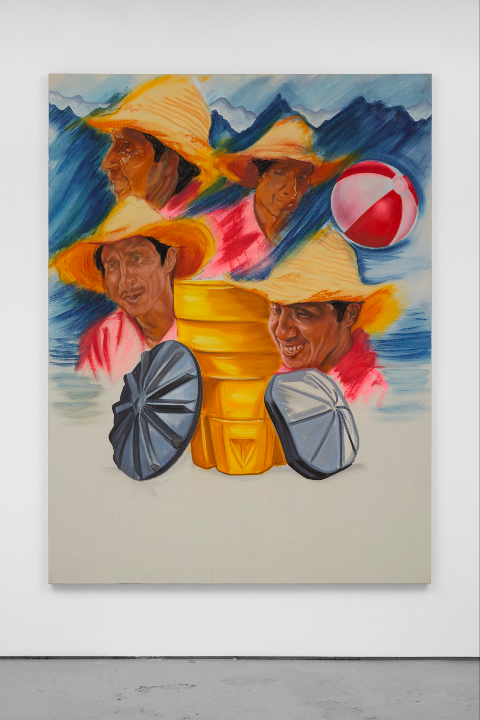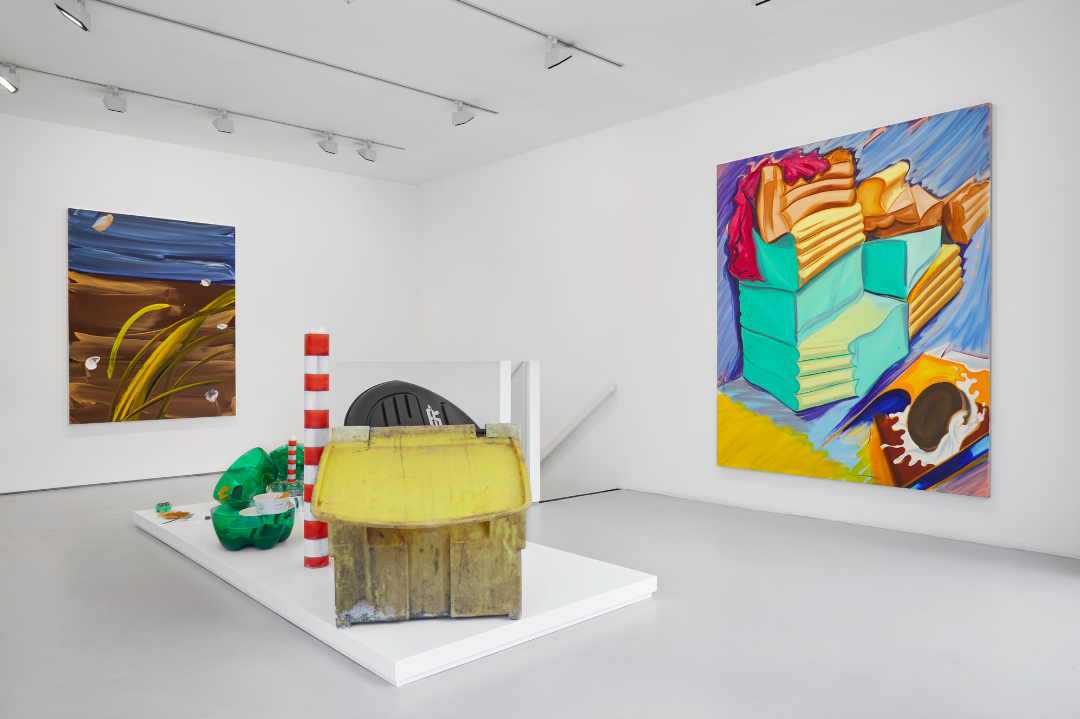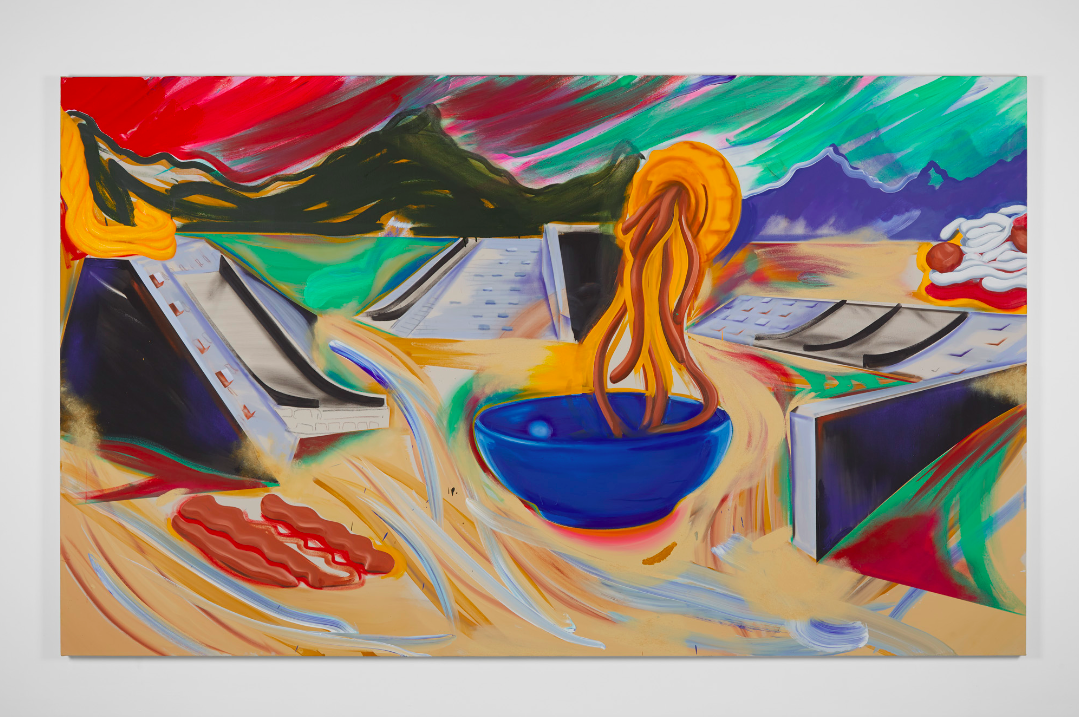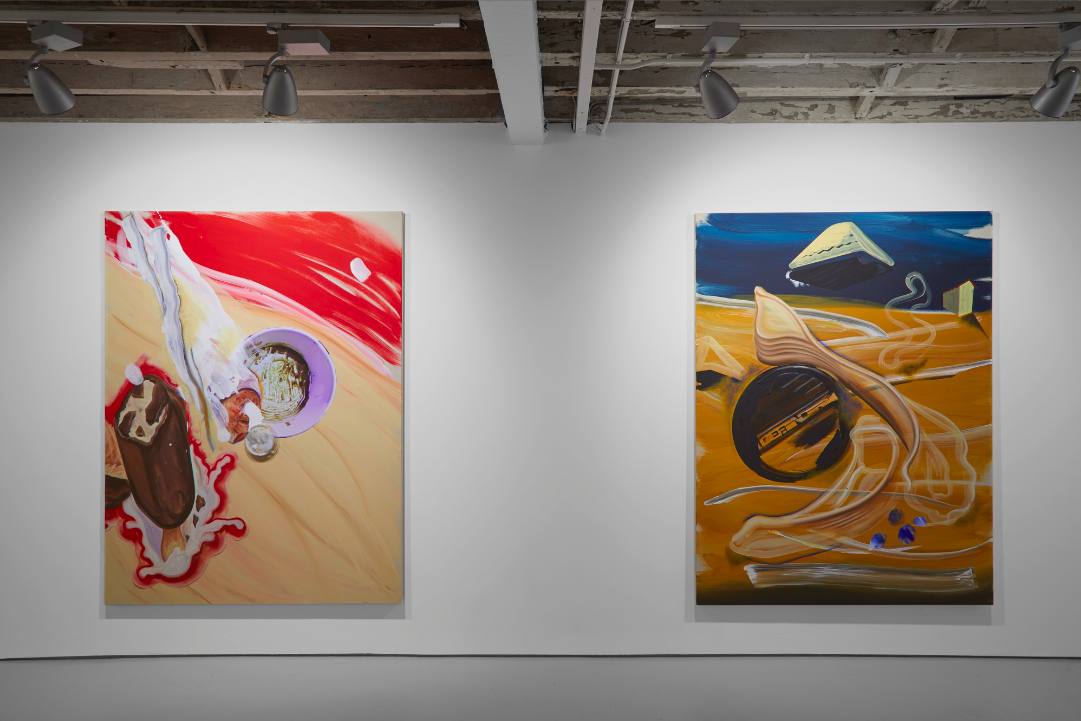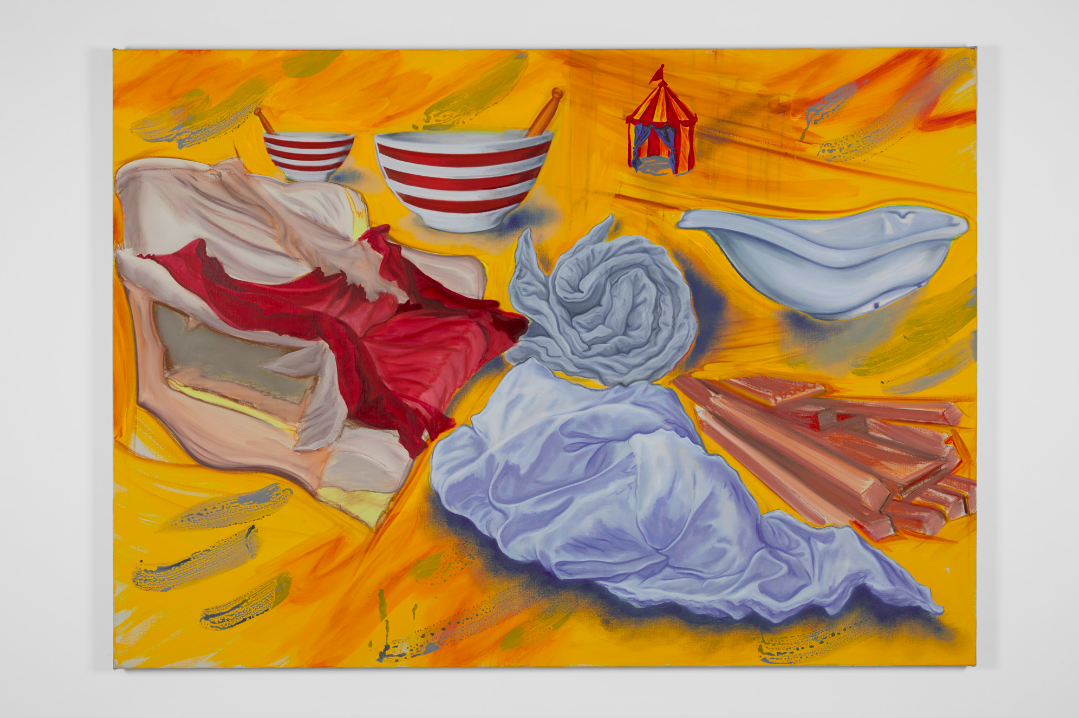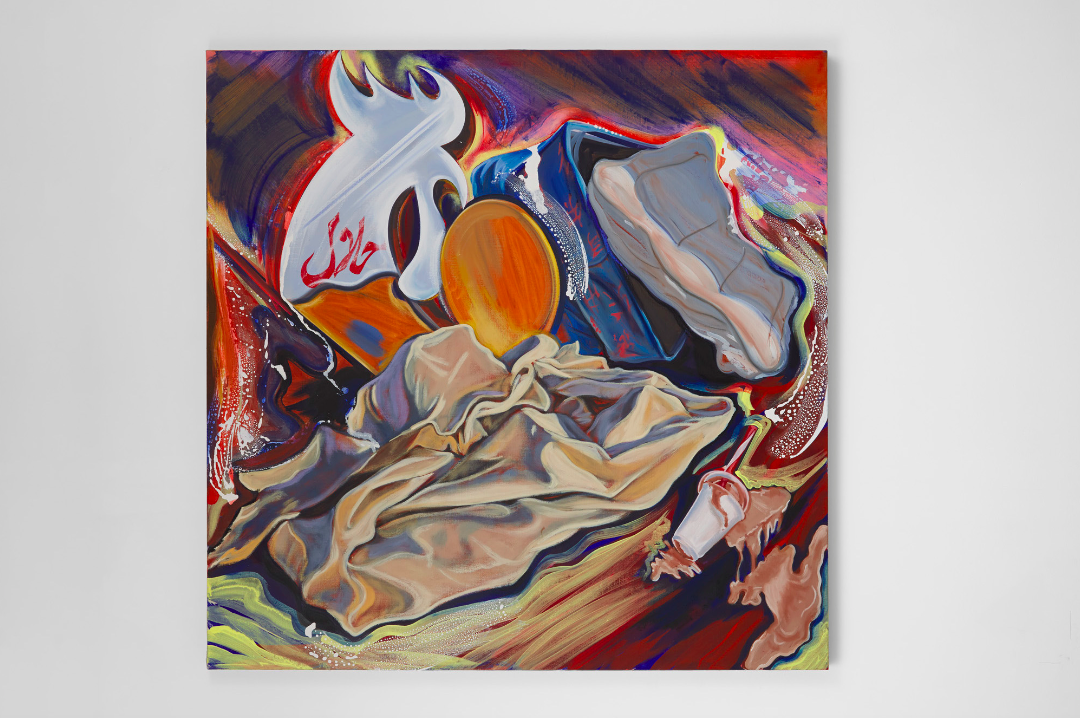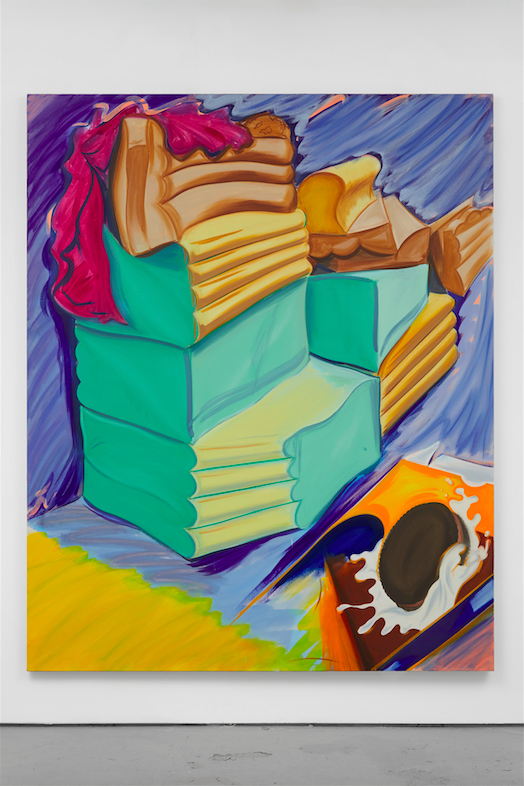
What were the starting points for Tofu Dealer (to kill my hunger in daytime wander)?
Drawing a portaloo in New York. The Caledonian Road. And a little later, trying to write about a 117-year-old Korean lady, Ozu’s inanimate friends and an incident with a chocolate milkshake.
It feels as though your paintings have become even more lively since we last spoke, the colours have brightened and they feel really playful. Is this something you also recognise in the work and if so, has anything in particular triggered it?
I guess so. The backgrounds have become far more schematic, which has allowed these blizzards or sandstorms of colour and spasmodic brush strokes to rush through. I have often considered painting to be something to do with relocating visions encountered in everyday life to a kind of remote, metaphorical plain. There these shapes can be worked like fibreglass shells by the howling winds particular to the interior of paintings. I also tended to make the underdrawing in pastels and conté crayons, so right away the base layer was laced with smouldering colours. Maybe it’s like chefs getting what they call asbestos hands…
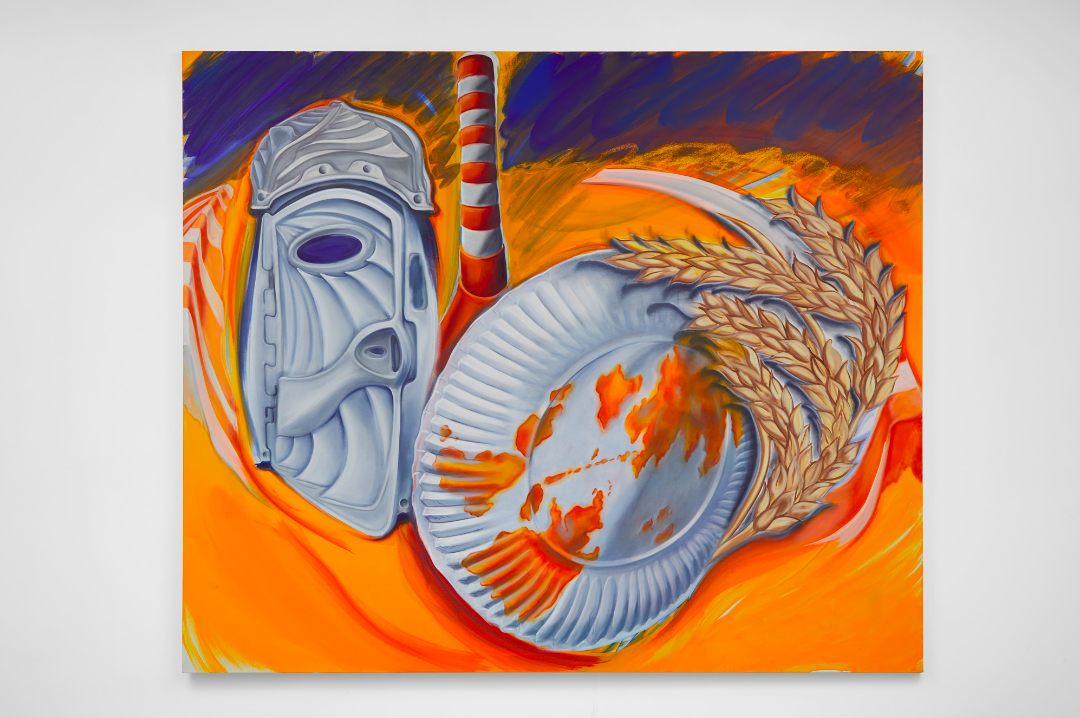
I really enjoyed the new Bain-Marie sculptures that sit upstairs—they’re witty and the more literal presentation of these items has added a new dimension to the experience of your paintings. Has this way of working with physical objects ever been so present in the planning stages of your paintings? Has this changed the way you see and understand the paintings also?
We’re up to our knees, if not our ears, in this stuff. These Wasabi pots seem to have frogspawned in my peripheral vision lately. I started making detours to the food court balcony in King’s Cross station, videoing and subsequently harvesting forms from this wasteland of barely-touched detritus. The tondo has been present in my work for a little while, so when I gave these a second look it was a case of Pass The Parcel. And the whorls, mottling, puddles of leftover Katsu contained in these chichi pots look fantastic, perfect, abhorrent, disquieting. Little reflections, shorthand worlds.
I have kept hold of examples of packaging for as long as I can remember, and a (haphazard) library of this kind of material is close to hand in the studio. When I began making these ‘Bain-marie’ pieces they seemed to cut to the chase, bubbling up spatial curios I was very much drawn to; motifs tumbling together unfettered. I realised I needed to haul the paintings into a more vivid terrain if they were to keep up with the dizziness of these little sculptures.
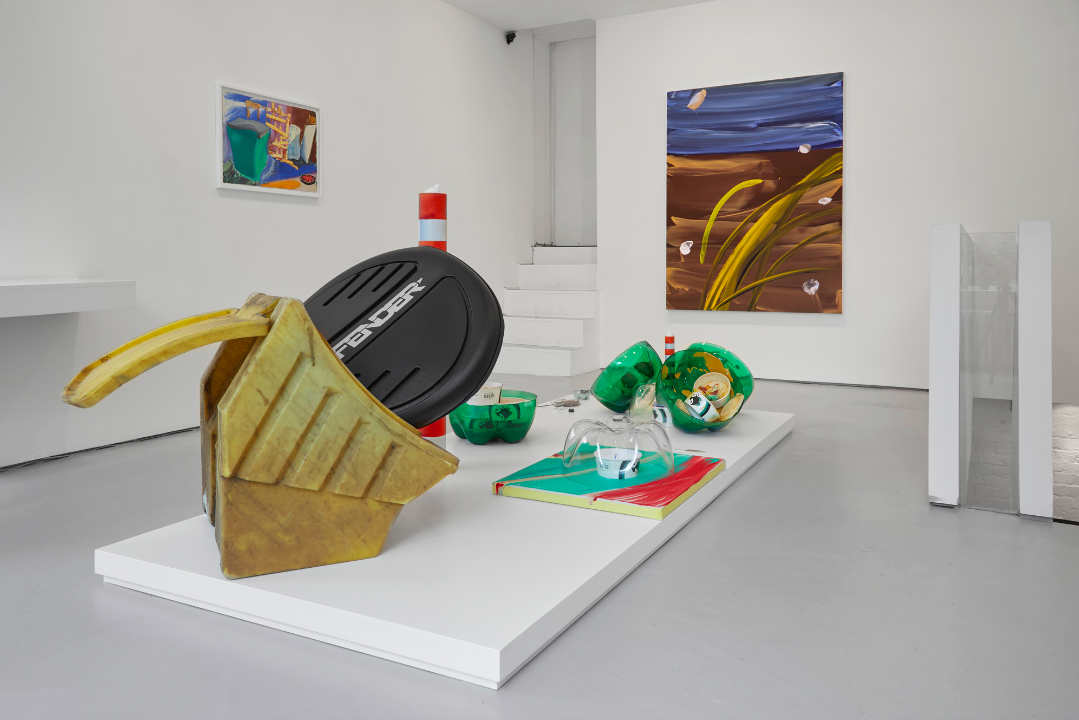
What is it about stains and leftover marks that interest you? They’re particularly enjoyable in Scirocco (snow rain striped plain)…
Often these things like grease on cardboard look like a flourish, a kind of calligraphy to me. In Scirocco… there is a print of one of these leftover Wasabi hotpots that is really a vortex of fork-scraping isolated in a sad little tondo. It’s a kind of visual whirlpool, rhythmic and somewhat lavatorial, but while these fast food outlets have been happy hunting grounds for me, it’s as much an ineffable quality that they are giving off as any kind of anthropological remark.
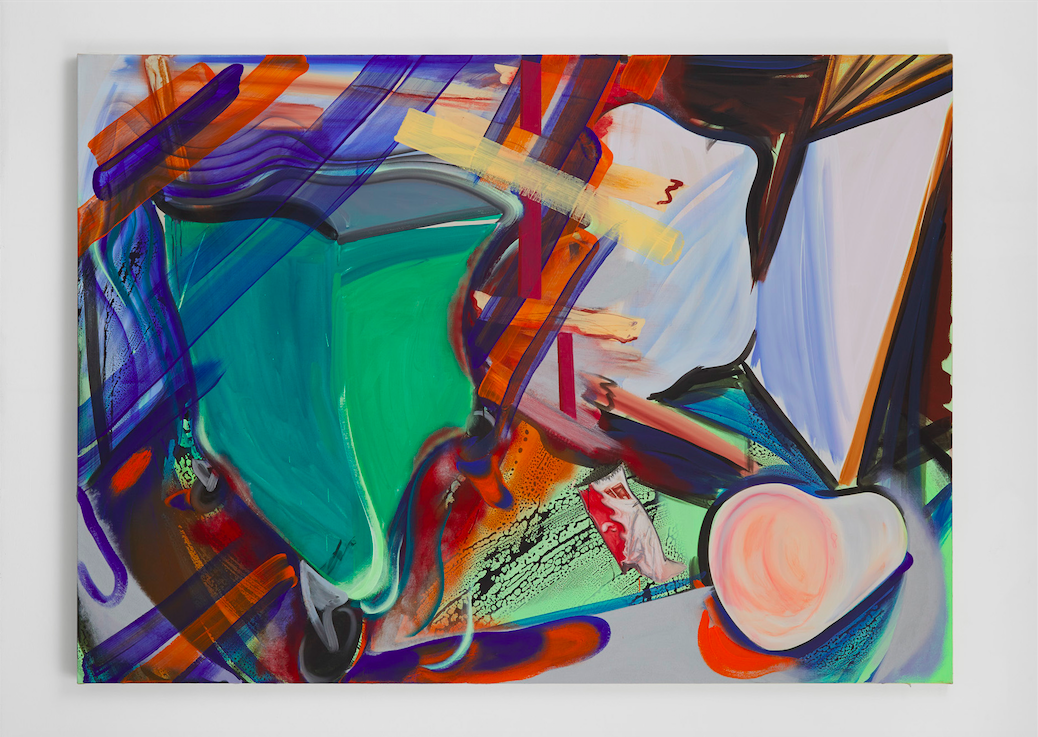
The treatment of the face in Hector Sand Barrel is more in line with branding than portraiture, but it still feels surprising to find a human represented in your work. Can you tell me a bit about this work and the influences behind it?
Hector, a Columbian Fair Trade Coffee farmer for Taylor’s of Harrogate, spoke to me one night in an advertisement break. In painting, it is not eminently possible, or even desirable, to be able to pinpoint the precise facet of an image that might agree to play along. So it can be worth making several passes at bottling whatever enigmas you might have detected. The metaphysical double or triple portraits in the Giorgione show at the Royal Academy probably seeded this fantasy. I was attracted to these loose, illegible allegories, the feeling of a compound image freighted with symbolism that remains breezily opaque. The sand barrel is a roadside crash guard that you see in America, and together they’re an apparition transmitted against the kind of digital, operatic plateau backdrop native to car adverts. Perhaps it’s a mixed metaphor, but the delivery lends it a jangly lyricism, and my work seems to start shifting gears when it veers close to nonsense.
‘Tofu Dealer (to kill my hunger in daytime wander)’ shows until 10 May at Josh Lilley Gallery, London. All images courtesy the artist and Josh Lilley Gallery, London. joshlilleygallery.com
